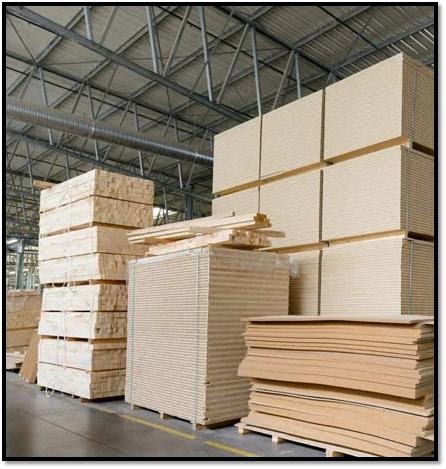Plywood is a popular building material of its myriad of properties including exceptional strength and withstanding moisture. This highly versatile and robust material is affordable and durable for various projects including flooring, furniture, kitchen cabinets, and walls. In fact, no other material can match the reliability and cost-effectiveness of plywood. Below are some frequently asked questions about this building material.

Who invented plywood?
Samuel Bentham applied for patents regarding the industrial production of veneers introducing the idea of plywood. In his description, a piece of plywood is made up of veneer layers laminated with special glue. Immanuel Nobel confirmed 50 years later that bonding thin layers of wood forms a durable laminated piece known today as plywood.
Where does plywood come from?
Trees are felled to collect logs for debarking and cutting into tiny veneer. The intensive process leads to the production of single continuous sheets or pre-measured sheets to ease arrangement. These sheets are left to dry, arranged, before bonding with special adhesives. After bonding, stamping, and grading of plywood according to factors including density and grain takes place.
What can you use plywood for?
Plywood is extremely versatile allowing use in various applications. People love using this material for its decorative surface and reinforced layers. Additionally, the exceptional strength and cost-effectiveness of plywood allow use in exterior and interior building projects. Commercial plywood manufacturers in Yamunanagar have various plywood options for various projects. People use plywood for applications including formwork and internal paneling. The types of plywood including interior, exterior, marine, and structural determine its application.
What is commercial plywood?
This is Moisture Resistant (MR Grade) plywood with exceptional tensile strength, great wear and tear ability, borer, and termite-proof. Commercial plywood resists moisture, dampness, and humidity to a particular level but it is not waterproof. It is prone to damage from prolonged exposure making it ideal for indoor use.
Is plywood recycled?
There is a great concern for environmental sustainability even when using plywood. Luckily, this material is available in recyclable options. Conversion to wood-waste is possible when the plywood is not stained, stained, or painted. People can turn the wood-waste into mulch or compost in the garden. Besides, waste is also good for animal bedding, raw soil improvement, and landscaping. Other ways to recycle plywood include repurposing solid pieces to give the furniture a distressed look.
What is the thickness of plywood?
Plywood varies in thickness according to the purpose. The standard thickness of plywood varies from 1/8 to ¼ inch. Thick and sturdy plywood is ideal for use as a veneer. Checking the manufacturer for available thickness options is strongly recommended. This allows selecting plywood with ideal thickness to match your project requirements.
What is the effect of water on plywood?
Regular plywood shrugs of water damage while stronger varieties are best suited to manage extended exposure. Keep in mind that wood whether treated or not is prone to wear and damage from prolonged exposure to moisture. Plywood is made from wood and untreated pieces don’t hold on for long. So, this warp and rot much quicker when wet.
What is special about marine-grade plywood?
This is hardwood plywood made with waterproof glue making it ideal for boats and their parts. Keep in mind that marine plywood is not rot-resistant, waterproof, or chemically treated. Waterproof glue used to make this plywood is weather and boil proof. So, it keeps layers of wood together on exposure to humidity, moisture, or boiling temperature.
Phenolic and melamine are the most common glues for marine plywood. Plywood with phenolic glue is a higher grade with better water resistance. Alternatively, plywood with melamine is low grade and likely to hit boiling or melting point earlier than phenolic glue.
Why choose plywood over OSB?
Unlike Oriented Stranded Board (OSB), the layers of plywood reinforce its strength. Plywood is the best material against moisture. Bonding plywood with phenolic glue enhances its water resistance. Sawing into any shape is possible with plywood making decoration easy while its laminated structure encourages extreme stability. Constructing flooring using plywood is possible for its high impact resistance that lessens tensile stress.
Cross laying of plywood for flooring allows withstanding moisture and temperature changes. Additionally, there is no need to worry about corrosion when using plywood for chemical projects. The wood grain finish makes plywood easy to stain. This allows creating a beautiful finish that makes plywood a great material for woodwork projects like shop fitting. Natural smoothness allows painting allowing use in cupboards with visible texture.
Bottom line
When considering using plywood for your next project, hope this article has answered some of the questions you might have had. Plywood is a highly versatile material but it pays to be knowledgeable about its possibilities and features. Understanding this allows finding the ideal plywood for your project.
